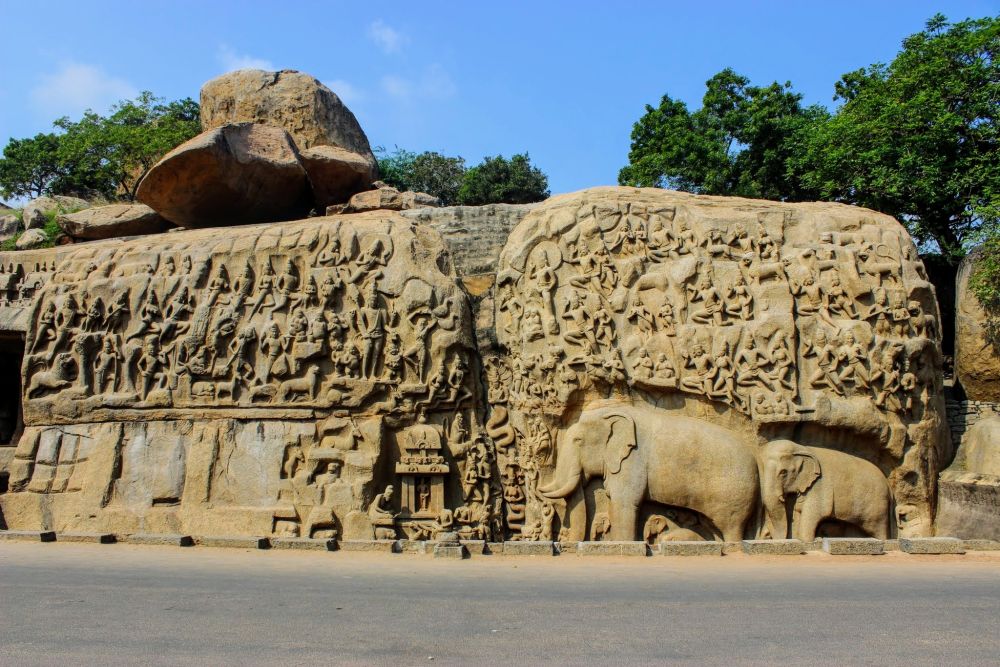

Nestled in the historic town of Mahabalipuram, also known as Mamallapuram, in the Southern Indian state of Tamil Nadu, Arjuna's Penance, also referred to as the Descent of the Ganges, is one of the finest examples of relief art from the 7th century. The town itself, named after the Pallava king Narasimhavarman I, has been a confluence of culture, history, and art since its origins.
Mahabalipuram's origins date back to the Pallava Dynasty, which ruled from the 3rd century CE to the 9th century CE. The site of Arjuna's Penance was created during this period when Mahabalipuram served as a bustling seaport and center of artistic excellence. It was under the patronage of King Narasimhavarman I and his successors that the magnificent monolithic rock sculptures, cave temples, and one of the largest open-air rock reliefs in the world, namely Arjuna's Penance, were carved.
Although always recognized by locals, Arjuna's Penance gained prominence amongst larger audiences in the colonial period. British explorers and travelers in the 18th and 19th centuries began documenting the site, which, in turn, catalyzed archaeological studies and conservation efforts. With the consolidation of India's railway network and better roads by the 20th century, Mahabalipuram became even more accessible, attracting both domestic and overseas visitors.
A significant milestone in the tourism history of Mahabalipuram was in 1984 when it was inscribed as a UNESCO World Heritage Site under the group of monuments at Mahabalipuram. This recognition brought increased global attention and a steady rise in tourist footfall. The site, along with the town's other architectural wonders, became integral to the cultural and historical narratives showcased to tourists.
In recent years, sustainable and experiential travel trends have influenced how tourists engage with destinations like Mahabalipuram. Visitors are increasingly seeking immersive experiences that allow for deeper connections with the history and culture of the place. This has led to the growth of heritage walks, cultural workshops, and eco-friendly accommodations in the area.
Equally, the advent of digital and social media has also played a role in drawing attention to Arjuna's Penance. High-quality imagery and engaging narratives shared online have attracted a more diverse, younger demographic of travelers, fueling a contemporary resurgence in Mahabalipuram's tourism appeal.
Today, Arjuna's Penance stands not only as a historical marvel but also as a testament to the sustainable conservation of ancient sites. Ongoing efforts by government bodies and international organizations ensure that the structural integrity and the context of this remarkable relief are maintained for future generations. As tourism continues to evolve, Mahabalipuram is poised to remain a cherished destination, blending the allure of its ancient past with the expectations of modern visitors.